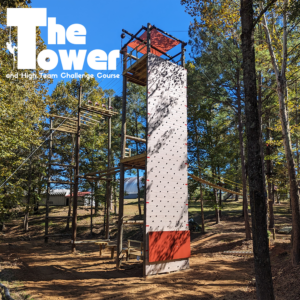Open Your Team's Potential with a Dynamic Challenge Course in Alabama
Open Your Team's Potential with a Dynamic Challenge Course in Alabama
Blog Article
Immerse Your Group in a Dynamic Challenge Course Experience for Growth and Unity
In the world of team growth and cohesion, the utilization of vibrant difficulty programs has arised as a compelling technique to foster growth and unity among group members. As teams encounter these trials together, they are often challenged with the opportunity to find untapped potential, strengthen bonds, and reveal brand-new techniques for functioning collectively towards usual goals.
Advantages of Dynamic Difficulty Courses
Taking part in dynamic difficulty training courses uses teams a hands-on chance to create essential communication and analytical abilities in a literally appealing atmosphere. These training courses give an unique setting where employee are confronted with numerous challenges that need cooperation, reliable interaction, and fast decision-making to overcome. By participating in activities such as high ropes courses, team structure games, and problem-solving challenges, participants are pushed out of their comfort zones, promoting individual and team development.
One considerable benefit of dynamic obstacle programs is the improvement of communication abilities within groups. Via encountering obstacles with each other, group participants discover to interact better, pay attention proactively, and offer clear directions to one another. These experiences translate straight right into the office, enhancing general team effort and productivity. In addition, these training courses promote analytical skills by requiring groups to assume critically, plan, and adjust to transforming circumstances right away. This ability to solve troubles efficiently under stress is a beneficial possession in any specialist setting. Overall, dynamic challenge training courses use an alternative approach to group development, incorporating physical task with skill-building to promote unity and development.
Group Building With Barrier Navigation
Challenge navigating on a vibrant challenge training course urges group participants to count on each various other's toughness, problem-solving capabilities, and durability. By facing physical and psychological obstacles as a cohesive system, team members learn to leverage individual skills for the cumulative advantage of the team.

Enhancing Interaction Skills and Trust
Structure upon the foundation of strengthened interpersonal relationships developed through getting over challenges as a group, the focus currently moves towards improving interaction skills and cultivating count on within the team dynamic. Effective interaction is vital for ensuring that employee understand each other's methods, objectives, and perspectives. By involving in activities that require clear and succinct interaction, such as navigating a challenge training course blindfolded or solving a problem with restricted spoken signs, staff member can practice active listening and efficient expression of concepts.
Trust fund is another essential aspect in group characteristics. Trusting your teammates implies thinking in their abilities, objectives, and dependability. With collaborative difficulties that demand a high degree of trust, such as a count on autumn or try here a ropes program where staff member count on each other for safety and security, people find out to allow go of anxiety and doubt, cultivating a feeling of unity and communication within the group. By sharpening interaction skills and developing depend on, teams can achieve greater synergy and performance.
Cultivating Friendship and Unity
Unity amongst group members is the keystone of a solid and cohesive team dynamic, vital for achieving common goals and cultivating a feeling of camaraderie. When group members feel joined, they are much more most likely to interact effectively, depend on one another, and job collaboratively in the direction of a common goal. Fostering friendship within a team can be accomplished through different activities throughout a dynamic difficulty course experience. These tasks encourage team participants to depend on each various other, build common respect, and appreciate the one-of-a-kind toughness that each individual offers the group. By taking part in obstacles that require participation and coordination, group members establish a much deeper link and understanding of one another, causing a solid feeling of unity. This unity not only boosts synergy during the difficulty training course but also lugs over into the office, creating a positive and encouraging environment where individuals feel valued and inspired to function in the direction of shared success.

Techniques for Long-Term Team Development
By specifying certain targets, team participants can straighten their efforts in the direction of a common function, fostering motivation and liability. Urging open discussion, offering positive responses, and proactively listening to group members can improve cooperation and count on within the team.
Furthermore, buying continual knowing and advancement possibilities can help employee get new skills, remain involved, and adapt to progressing obstacles. Whether through training programs, workshops, or mentorship efforts, giving avenues for specialist and personal growth can contribute to the team's overall success. Furthermore, identifying and commemorating achievements, both little and large, can increase morale and strengthen a favorable group society. By applying these strategies constantly, groups can browse barriers, welcome adjustment, and grow best site over time.

Conclusion
In final thought, vibrant obstacle training courses offer numerous advantages for team growth and unity. These experiences give a system for long-term team development and development, leading to a more effective and natural team dynamic.
In the realm of group advancement and communication, the use of dynamic obstacle programs has emerged as an engaging method to cultivate growth and unity among group members. By involving in activities such as high ropes training courses, team structure games, and problem-solving difficulties, participants are pressed out of their comfort areas, fostering Look At This personal and group development.
In essence, group building via obstacle navigating is an efficient way to cultivate an interconnected and helpful group dynamic.

Report this page